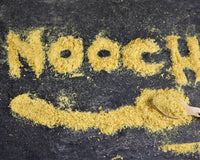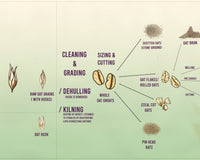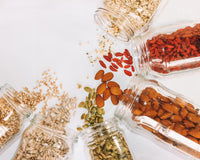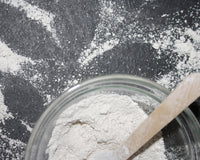What is Barley?
On first glance ‘barley’ doesn’t seem like a word that many of us have heard of, or relate to in our day-to-day life. However, barley is the fourth most common grain used across the world.
After wheat, rice, and corn, barley is the next grain used in many of our foods and drinks. Barley comes from a cereal plant and can grow in many climates. Hence, why it’s turned out as quite a popular grain.
Where is it from?
Originating from northwestern Europe, Egypt and Mesopotamia, Barley was one of the first grains found in ancient civilisations. Now, predominantly grown in western Asia and northeast Africa, Barley is used hugely across countries all around the world.
How is it grown?
With adequate care, barley is fairly simple to grow (in the right climate that is). Barley comes in two different flower types, used for different reasons.
Six-Row Barley
Six-row barley has three spikes on each notch that contain little florets that eventually turn into kernels. This type contains a very high amount of protein, and is therefore used in lots of bulked animal feeds, and as livestock bedding.
Two-Row Barley
Two-row barley has flowers that grow in the middle. They produce kernels and adjacent florets that are normally germ-free. In contrast to the six-row type, it contains a higher sugar amount. This makes it more common for malting and awakening the ‘grain’ in the cereal plant.
Wheat & Wholegrain Barley
A common misconception barley faces, is that it contains wheat. Barley is its own whole grain that does not contain any wheat grain. It inclines to be used as a whole. Whereas wheat tends to be milled and added to ingredients such as flour, before it is used in cooking. Barley, however, is occasionally used as an alternative to wheat; in less developed countries that have the incorrect climate for growing wheat.
Gluten
Linking to the misconception of barley and wheat, the ingredient gluten, which is commonly linked to the wheat grain is found in the barley cereal. Even though it is found in small amounts, through a protein ingredient originating from the plant itself, barley is not suitable for those who are gluten-intolerant or live a gluten-free diet. This also means barley isn’t a suitable component for making flours, as a high amount of gluten is essential for the rising of doughs.
Barley Health Benefits
For those who do have a gluten-inclusive diet, you will be glad to know that barley is packed with lots of health and wellbeing benefits.
Barley has a low glycaemic index which means it releases sugar slowly, which is easier and more beneficial for the body to undertake. It also has a higher amount of potassium and copper, and lower sodium, which is valuable to your working heart and nerves.
Interestingly, barley contains selenium and manganese which is a great booster for your immune system, and helpful towards your metabolic rate. Another nutrient of barley is phosphorus. The high phosphorus levels help towards storing and using your energy for longer.
Organic barley is particularly useful for these health benefits as it also provides antioxidants and inflammatory nutrients. Which, when you put together with all of these other ingredients, provides you with a great help towards your body as a whole.
How Is Barley Used?
Barley is a versatile plant used across the globe for different reasons.
Barley flour
Organic barley flour is unusual as it has a distinct sweet flavour to it. As an unleavened type of flour, barley flour is great for foods like porridges and flatbreads. However, many cultures will grind barley and wheat flour together to make breads that will rise. These simple recipes are wildly commended in many cultures across Africa. Whereas, in some parts of Asia, barley flour is used as an ingredient to make noodles.
Similar to how rolled oats are made, flaked barley is flattened and sliced and soaked before being sold. They are a softened form of the barley plant and work well in porridges, puddings, and breakfast cereals. Barley flakes can be used as an alternative to oats. In many ways it is a healthier option. Barley contains lots more fibre than oats and has plenty of vitamins and minerals included too.
Earlier on in the article, ‘kernels’ were mentioned. In pearl barley, whole kernels from the outer bran layer, that are first removed, polished and then slightly steamed, are used in a variety of meals. Risottos, salads, roasted vegetable assortments, and stews can be great recipes to trial pearl barley.
Pearl barley is great to bulk up your meals, as it absorbs well into liquids. This helps you to get that satiated feeling when you’re eating, which can be great for cutting out cravings and the feeling to constantly snack. On top of that, it is a great product to help promote your cholesterol levels
It is a great alternative to white rice as it contains double the amount of fibre and calcium than white rice does alone. Nevertheless, it’s also a great alternative because it contains an equivalent amount of protein and fat that rice does, therefore it could be a great switch if you’re feeling bored with just using rice in your meals.






